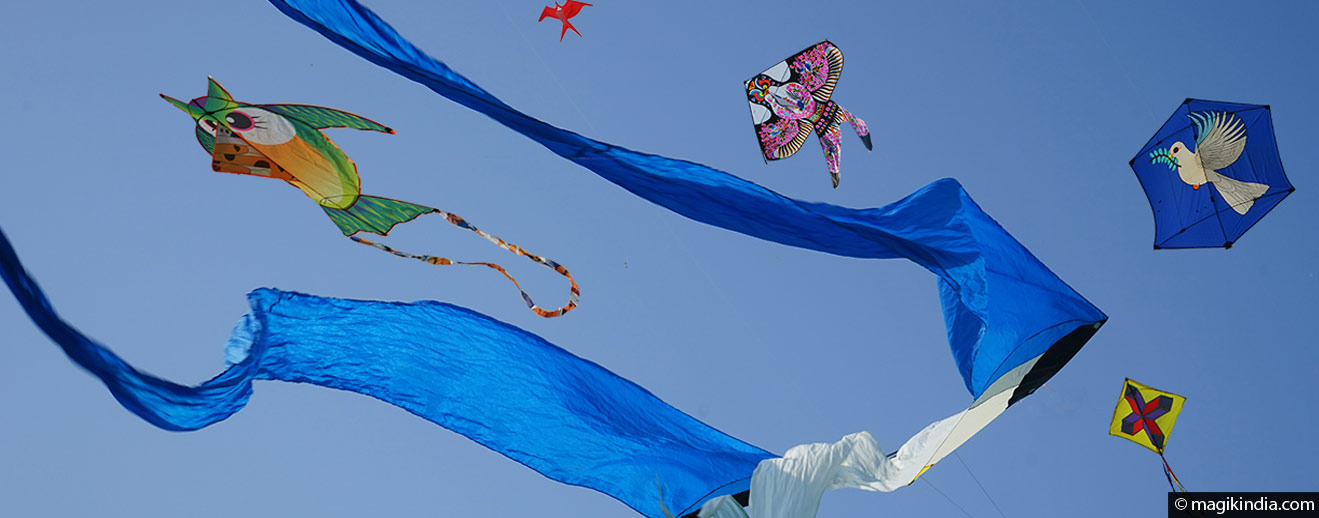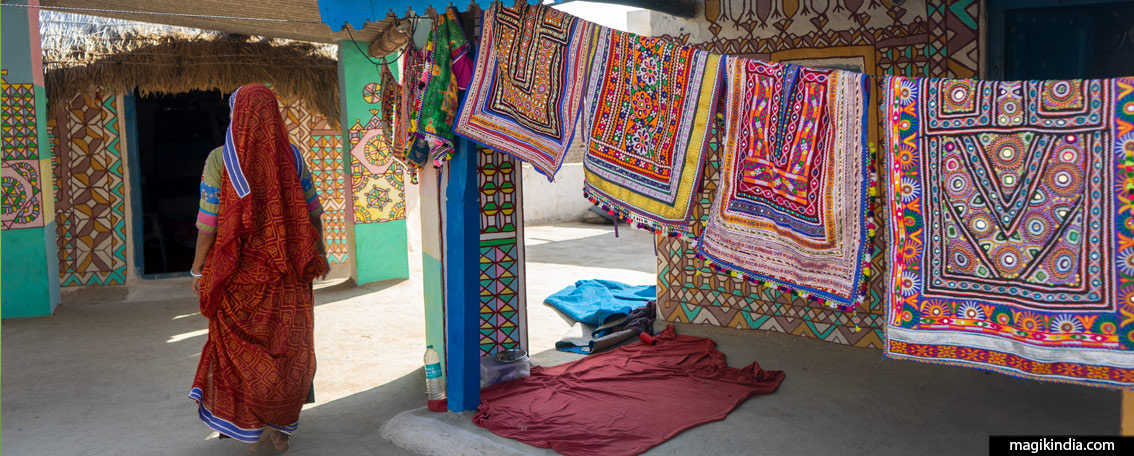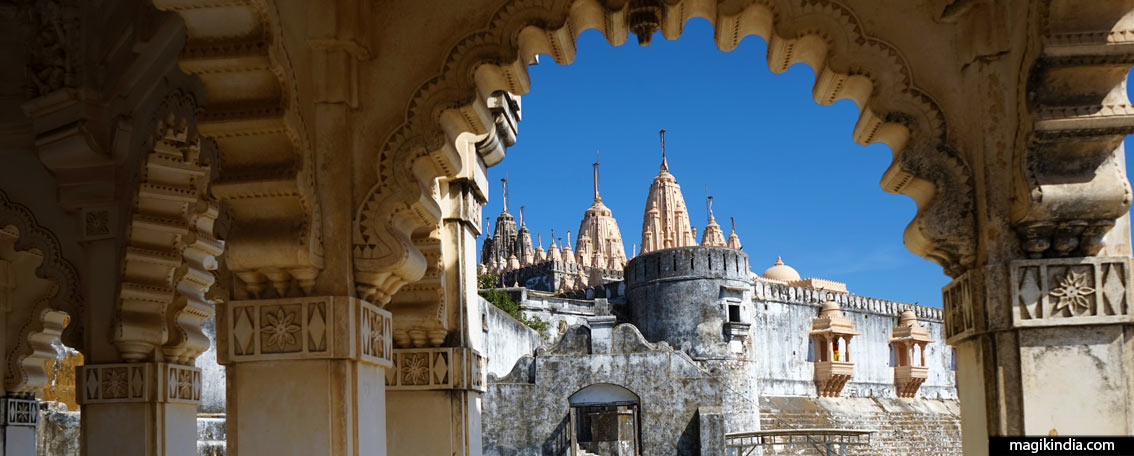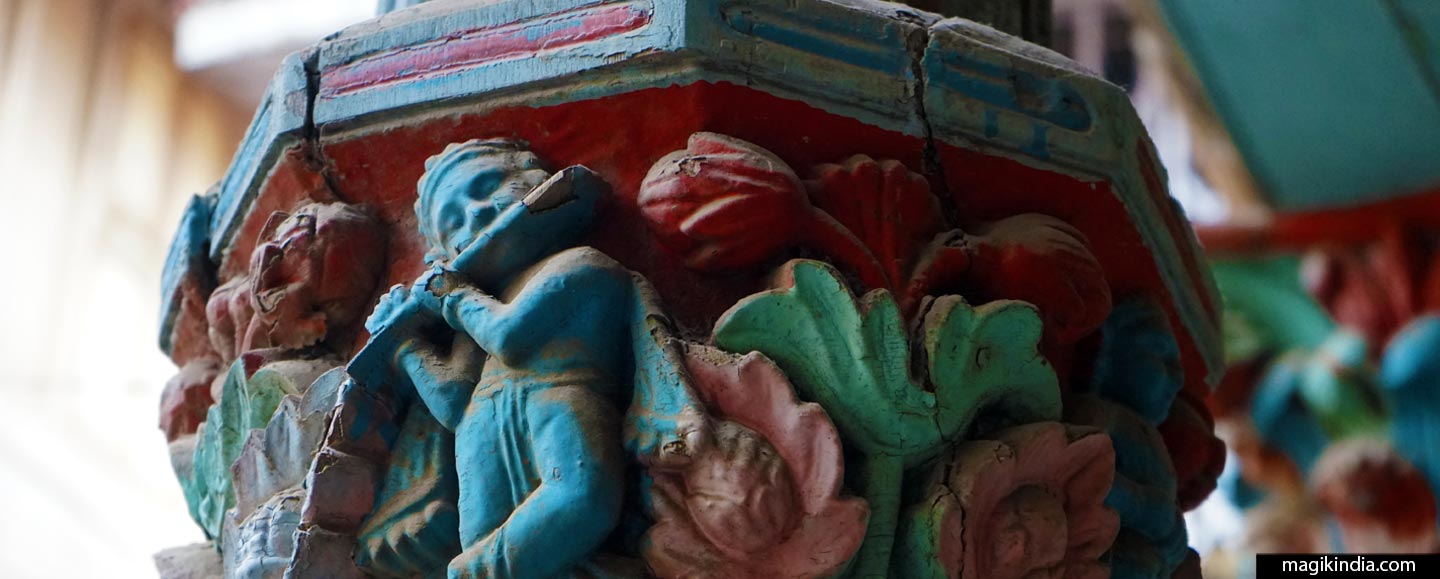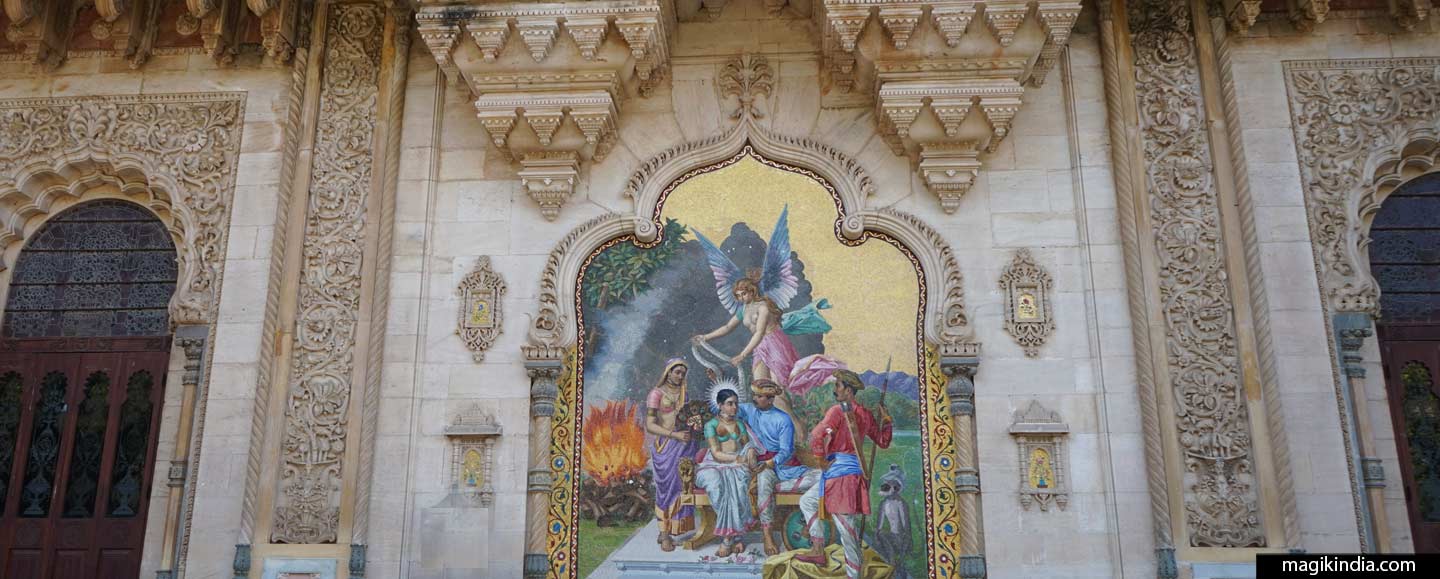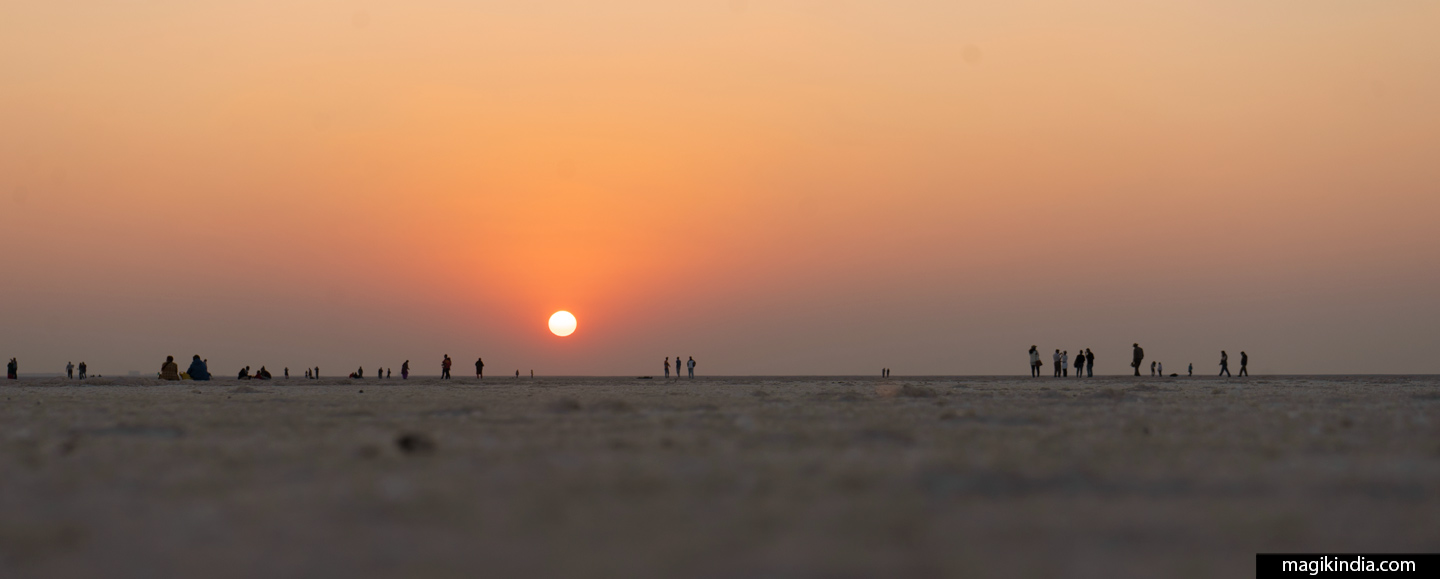
Modhera, the majestuous Sun Temple of Gujarat
Modhera is a land of legend. It is said that after Lord Rama had vanquished the demon Ravana in Sri Lanka, he and his spouse Sita stopped here on their way home ; so it is not surprising that the Solanki sovereigns should have chosen this holy ground to build a magnificent and wholly unique sun temple.
The Legend of Modhera
Modhera is said to be the original home of the Modha Brahmans. According to the legend, this caste received Modhera as a krsnarpana (gift) on the occasion of Rama and Sita’s marriage.
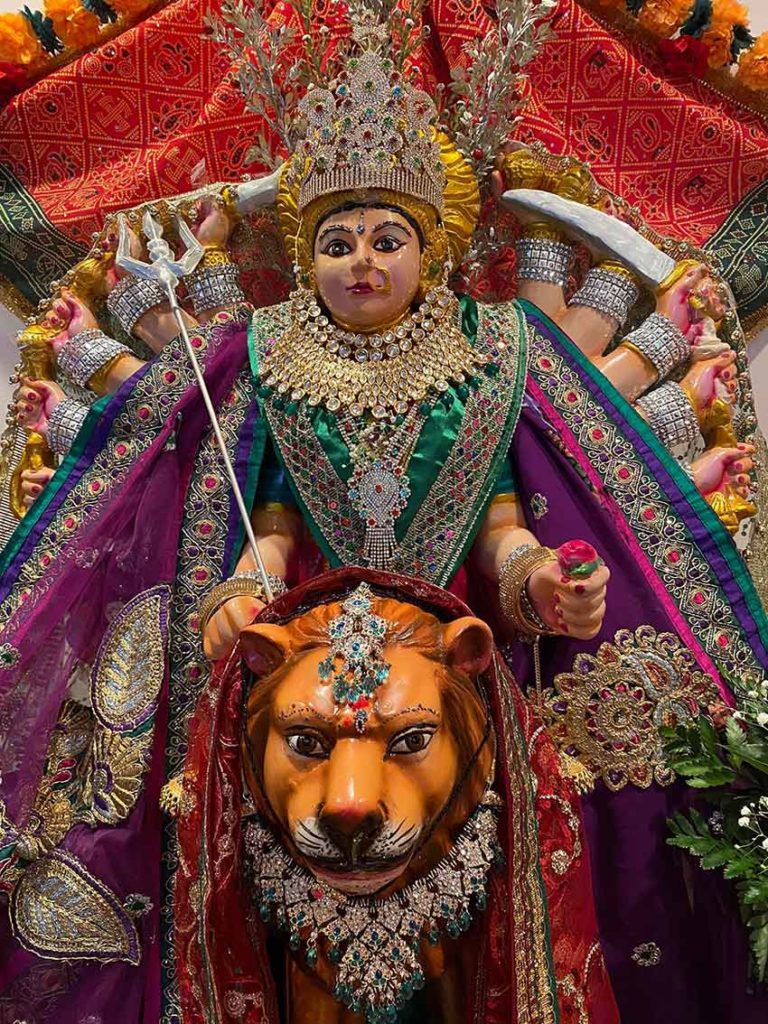
In the mythological tales of the Skanda Purana, after he had vanquished Ravana, Rama consulted the sage Vashistha Muni and asked him to show him a Dharmaranya Kshetra (place of penitence) where he could purify himself of the sin of Brahma hatya (murder of a Brahman). The sage showed him the Modhera region. Lord Rama settled in a village called Modherak where he performed a yajna (fire ritual). It is believed that Modherak was today’s village of Modhera.
A temple dedicated to the goddess Modheshwari, a deity of the Modha Brahman caste, originally stood in the Sun Temple complex. The existing one is west of the town of Mehsana, 15km from Modhera. Modheshwari is the chief goddess of Gujarat and as such there are numerous temples of the goddess all over the state. Matangi Modeshwari Mata is an aspect of the goddess Durga.
She is depicted as having 18 arms, each holding a weapon or accessory such as a trishula (trident), a khadga (sword), talwar (sabre), kamandala (pot), shankha (conch shell), gada (club) and a damaru (drum). She is usually shown to be seated on a lion.
The story of the temple
The Modhera Sun Temple, on the banks of the Pushpawati 100km from Ahmedabad, was built in 1026 in the reign of Bhima Deva I (Solanki dynasty). The Solankis believed they were descended from the Suryavamsha, the lineage of the sun god Surya, so they dedicated their temple to him.
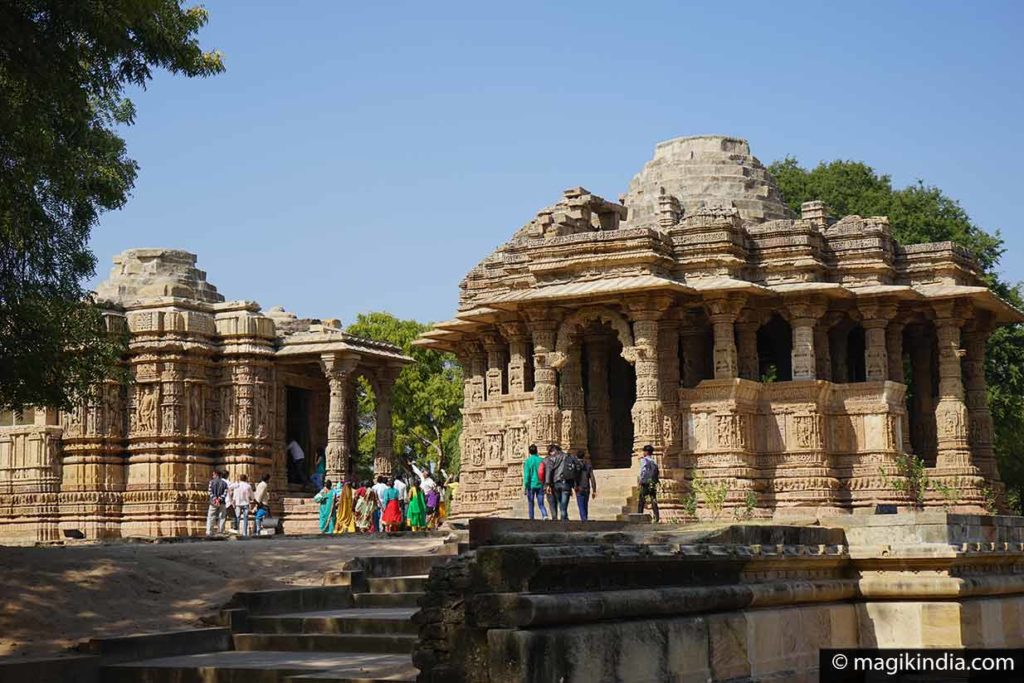
The Solanki kings were great builders and patrons of the arts. Their fame is inscribed in stone to this day, for example with the Rani-Ki-Vav in Patan, the Jain temples in Taranga and the Rudra Mahal in Siddhpur.
The Modhera temple has as powerful an aura as India’s other, more famous sun temples at Martand in Cashmere and Konark in Odisha
The Architecture of Modhera Sun Temple
The temple was badly damaged during the Mughal invasions, but what remains is still magnificent and a clear indication of its past beauty and the sacred nature of the site.
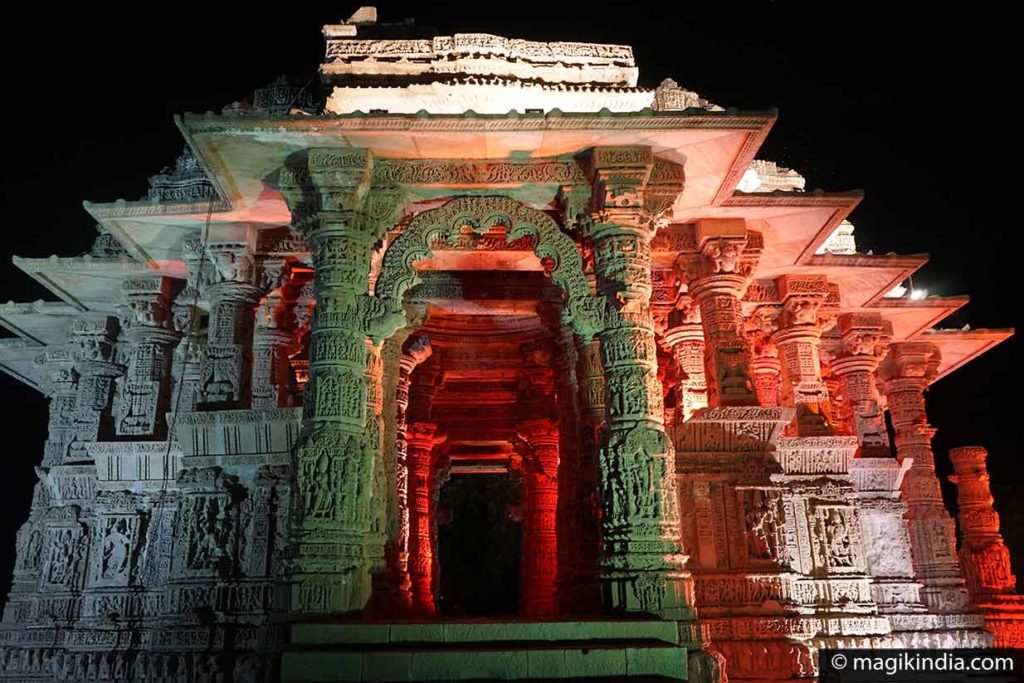
The temple complex is an engineering wonder, built in compliance with the Shilpa Shastras. In the ancient scriptures the Sanskrit term silpa sastra means the science of the arts and crafts. In terms of temple design, Shilpa Shastras or Vaastu Shastras were manuals prescribing, among other things, the proportions of a sculpted figure, the principles of composition, symbolism, and the rules of architecture.
Astronomical principles were also incorporated: built on the tropic of Cancer, the temple was so designed that at the two equinoxes the sun’s first rays fell on the main idol.
The Surya temple consists of 3 distinct elements in alignment:
The Rama Kund or Surya Kund
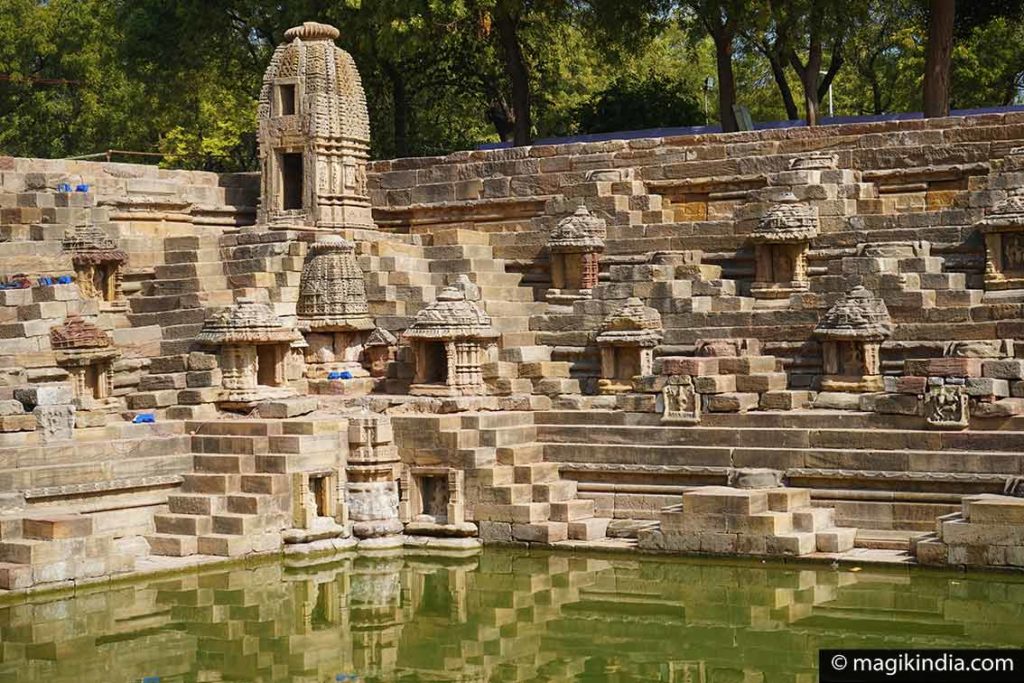
The first thing you encounter at the complex is a superb, perfectly geometrical bathing tank, 50m x 20m, where devotees performed their ritual ablutions. The temple makes a beautiful reflection in the water.
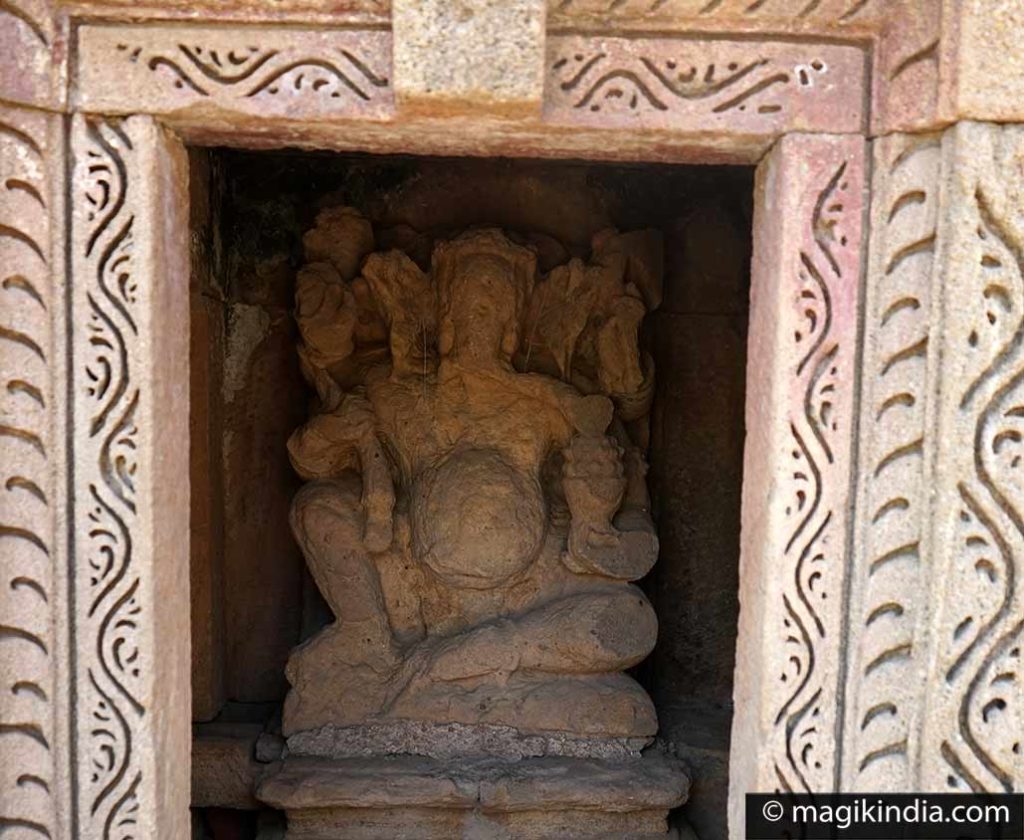
All around are 108 small shrines. Four larger shrines are dedicated to Vishnu (on the east side), Ganesha and Sitala Mata (south) and Nataraja (west). The kund has four landings linked by staircases in the pyramid pattern typical of the baoli stepwells of Gujarat.
Sabha Mandapa
A large torana (archway), of which all that remains today are two finely carved pillars, led to the Sabha Mandapa.
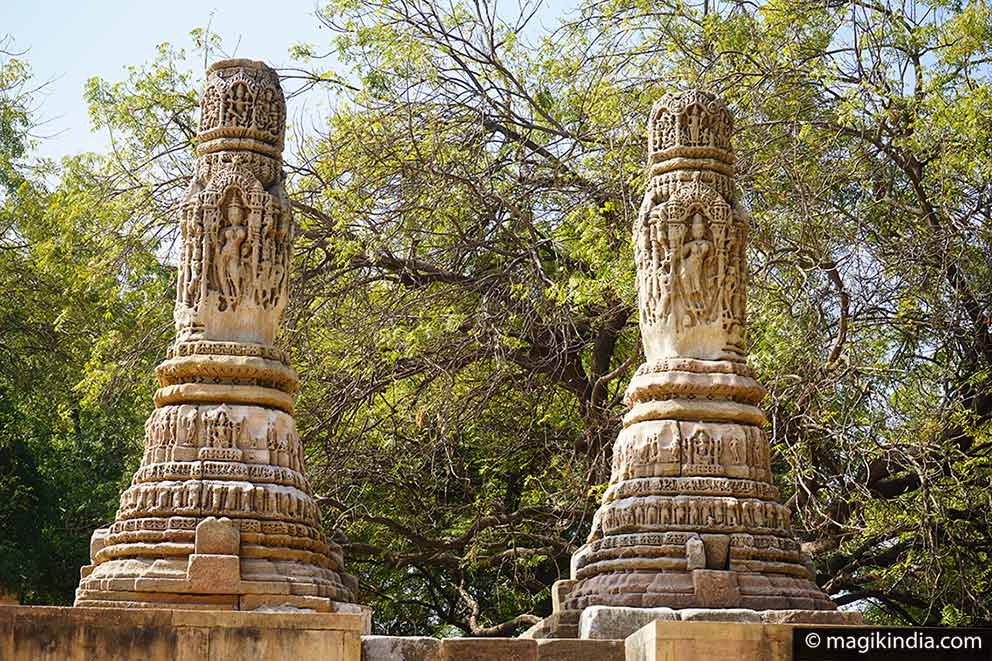
The Sabha Mandapa (“assembly hall”) was built for religious gatherings. It is octagonal in plan, open on all sides and features 52 delicately carved pillars. The carvings portray scenes from the Ramayana, the Mahabharata and the life of Krishna.
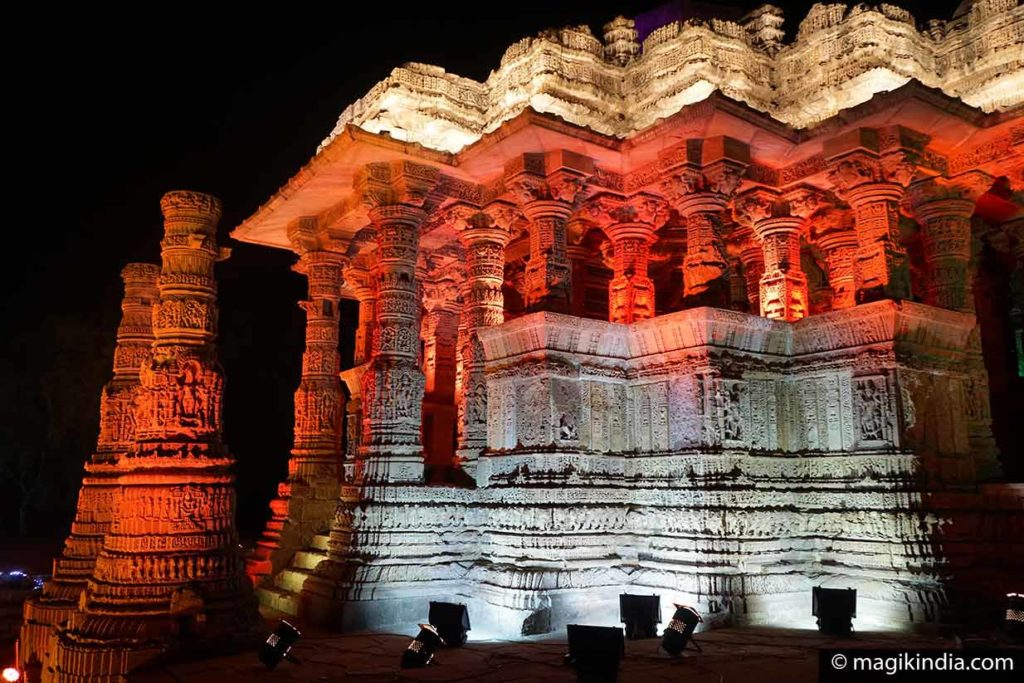
Garbhagrha and Guha Mandapa
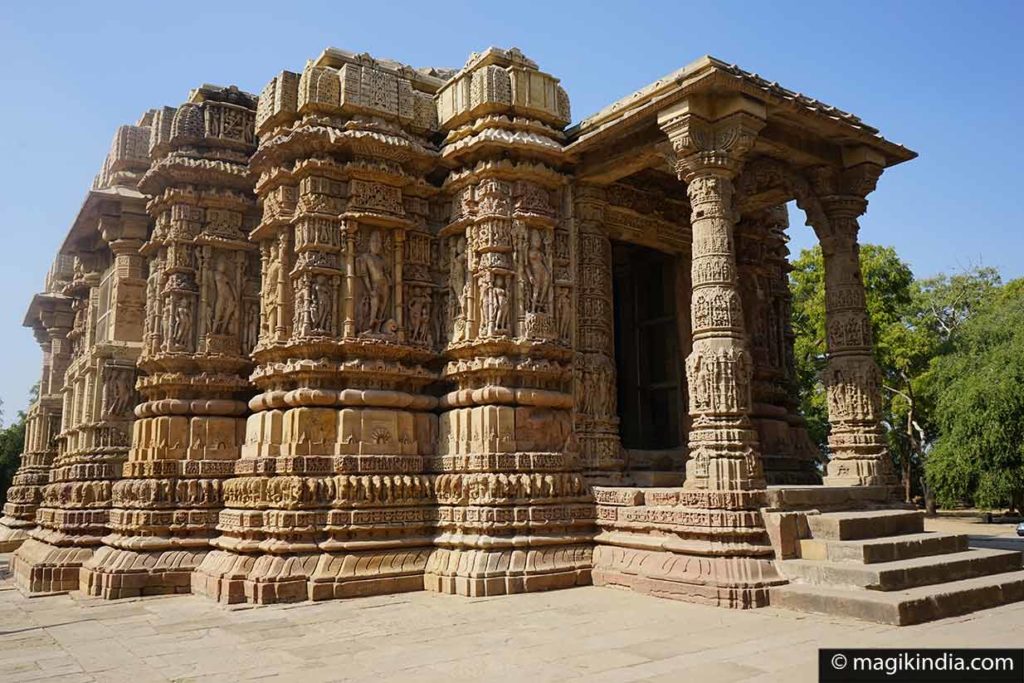
Behind the Sabha Mandapa is another construction, built on a lotus-shaped base and consisting of a mandapa (hall) and a garbhagrha (sanctum sanctorum) that once houses a statue of Surya.
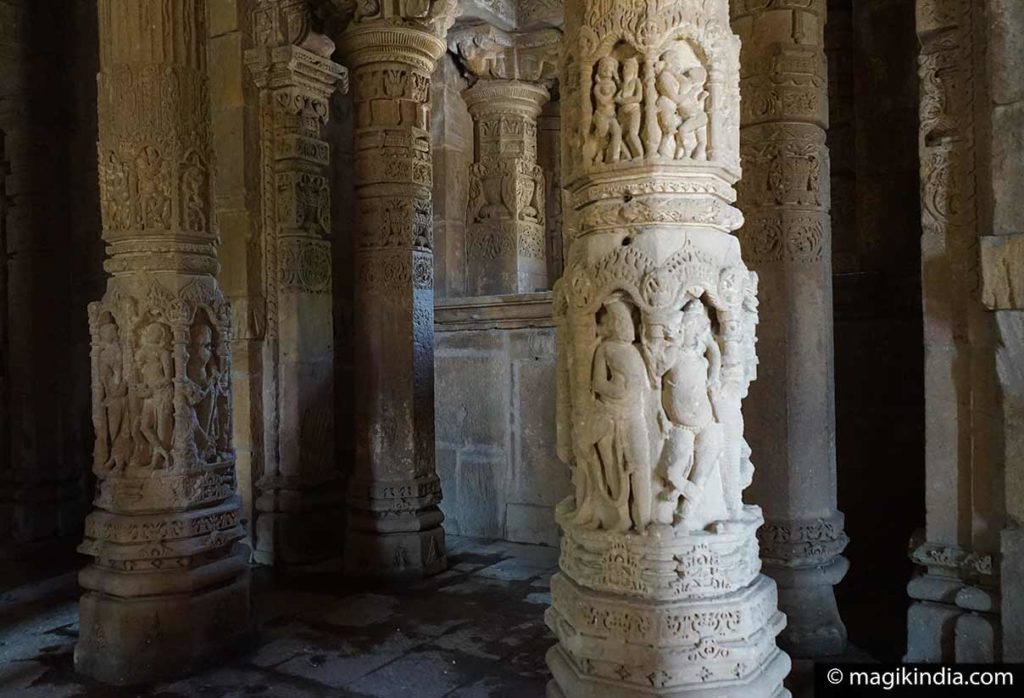
The building is positioned so that at each equinox the sun’s first rays would light up the gem-studded face of the Surya idol. The statue is said to have been looted when Mahmud of Ghazni plundered the area.
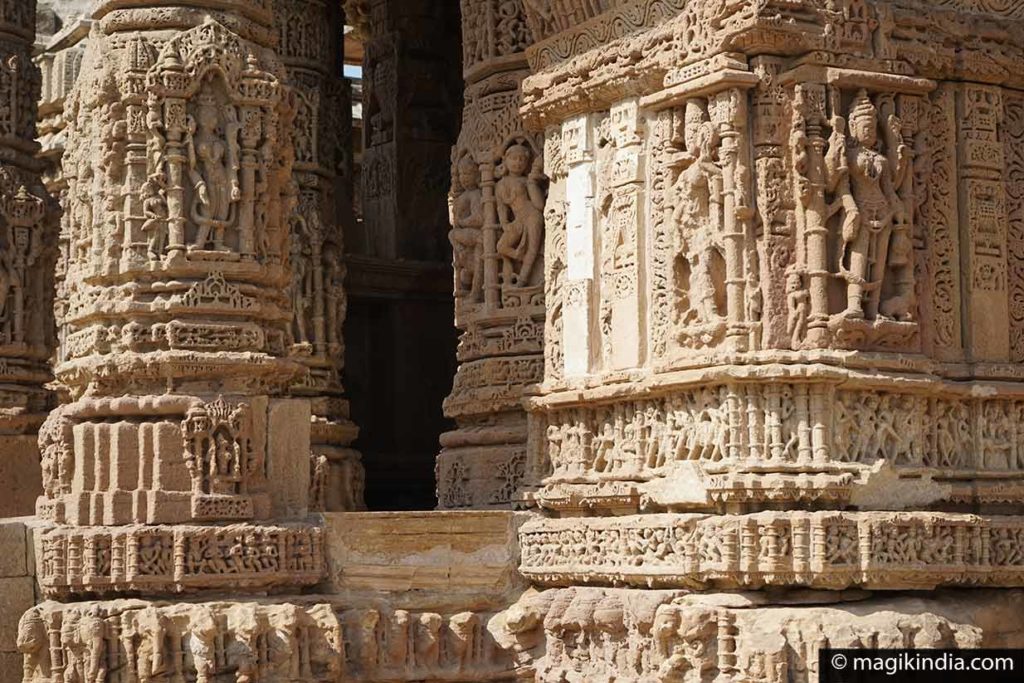
Inside, the walls feature twelve niches, each housing a sculpted Aditya figure, and other carvings showing scenes of human life from birth to death.
Outside, the walls are delicately sculpted with gods and goddesses, animals, plants and a few erotic scenes.
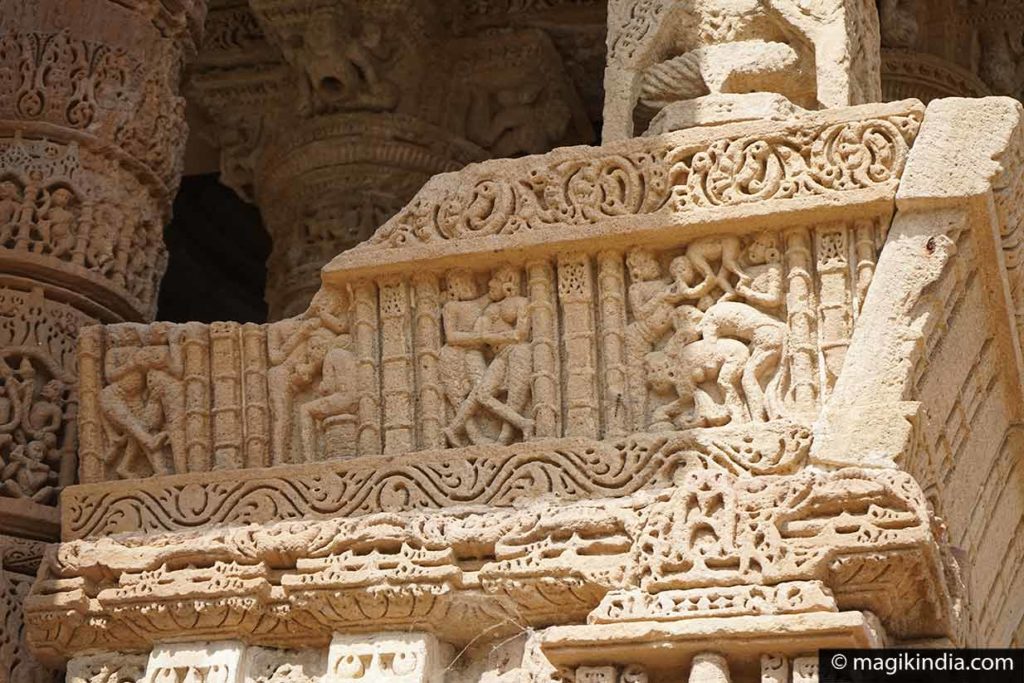
Modhera Dance Festival
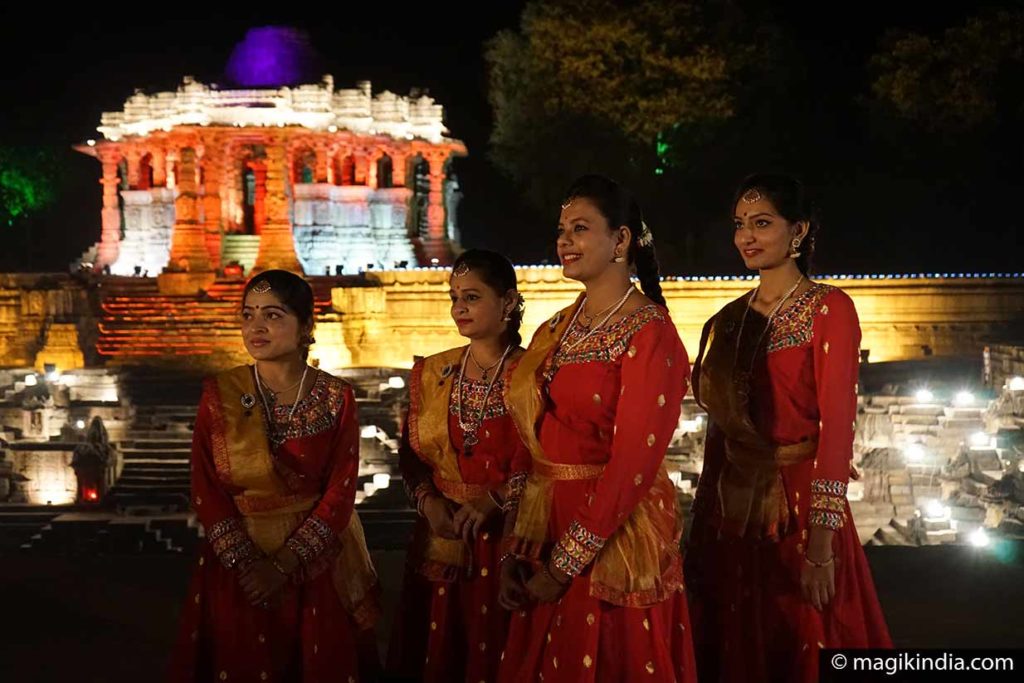
The Modhera Dance Festival or Uttarardh Mahotsav is set against the backdrop of Modhera’s majestic sun temple, dressed in its best suit of lights for the occasion. It is organised by the Gujarat Tourism Corporation. It brings together dance troupes and solo performers from all over India, offering a panorama of India’s many dance styles…
KNOW MORE ABOUT ITMust-visit around Modhera
Mehsana
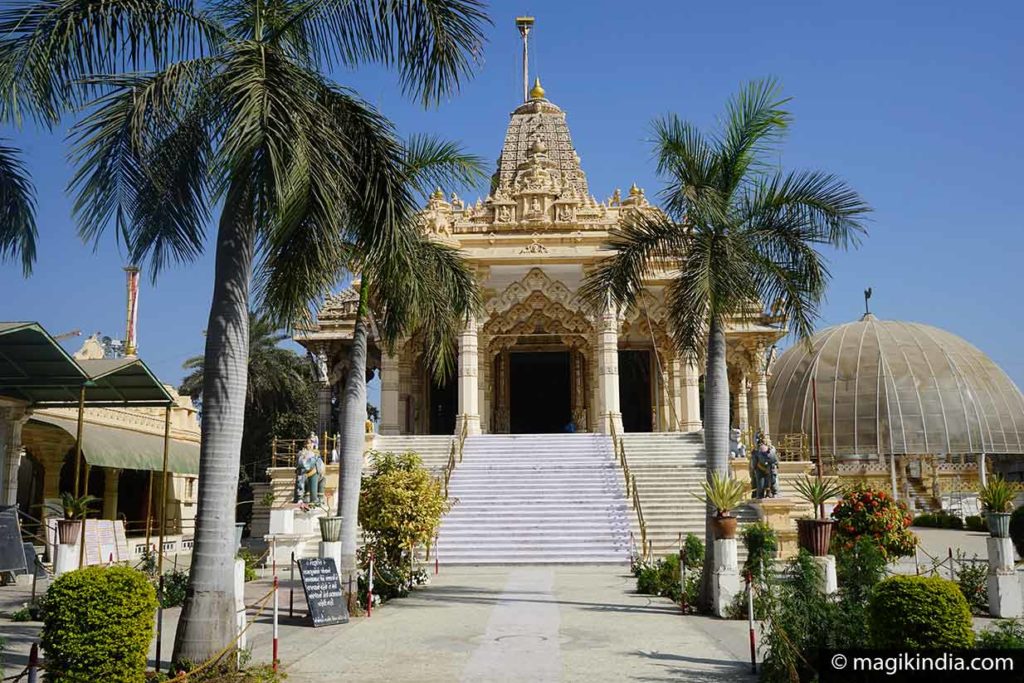
The town of Mehsana, about 15km from Modhera, is known as a pilgrimage centre for the Jain religion. It is worth visiting for several of its temples, especially Simandhar Swami Temple.
This imposing place on the Ahmedabad road is dedicated to Bhagwan Simandhar Swami, the living Tirthankar (jain saint). The huge 9m idol is carved from white marble and was erected on the initiative of Acharya Kailassagarsuri Maharaj Sahib in 1971.
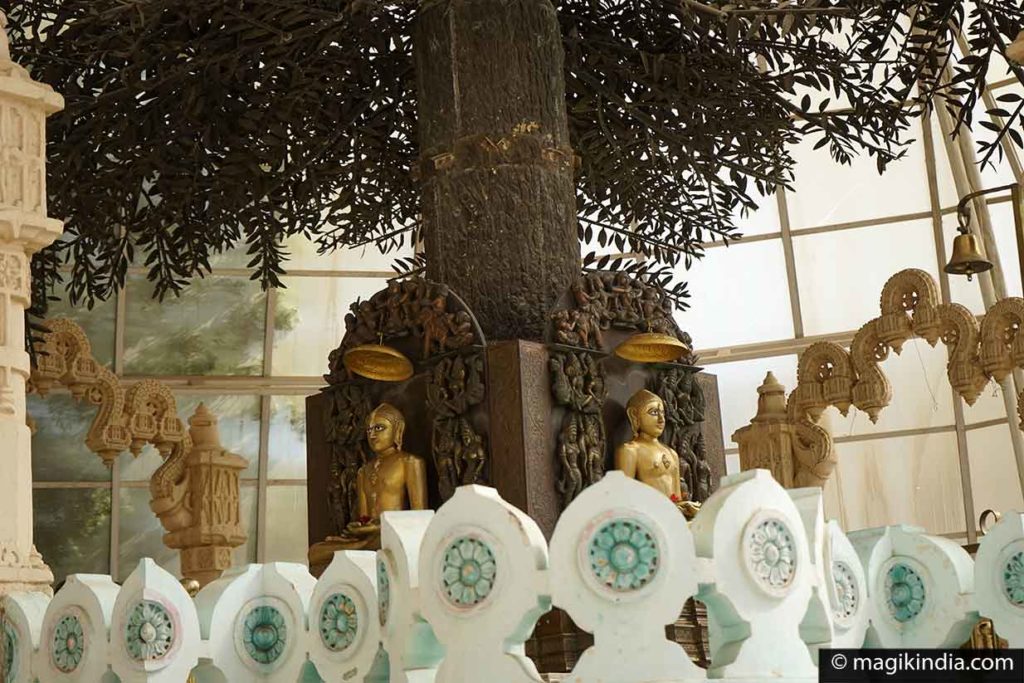
Becharaji
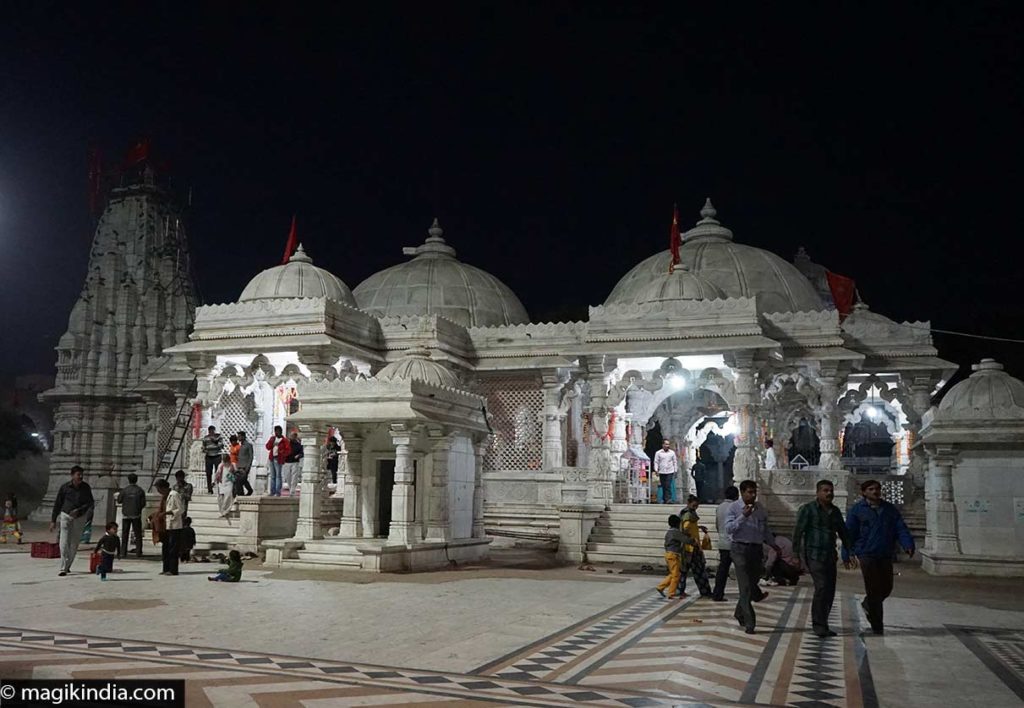
Becharaji town is famous for its temple to Bahuchara Mata, goddess of fertility and patron saint of hijras (transgenders). It is also one of the highly revered Siddha Shakti Peethas, a place where Sati’s hands are said to have fallen and a place where the sincere wishes of the faithful are fulfilled…
KNOW MORE ABOUT IT
